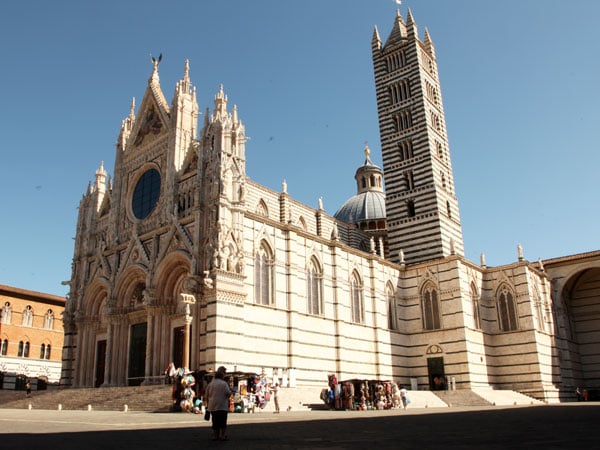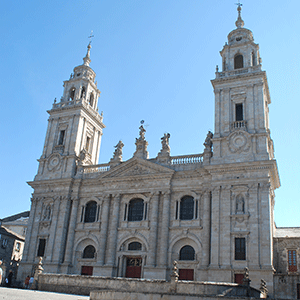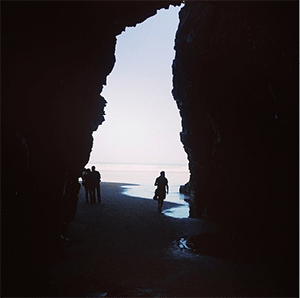Cathedrals of Galicia
Santiago de Compostela cathedral is the most famous cathedral in Galicia but did you know there are four other cathedrals in Galicia, along four main Camino de Santiago routes to Santiago de Compostela. Most of Galicia’s cathedrals are medieval in origin, following a classic Romanesque style, although later additions have given the buildings their unique look.
Many parish churches, chapels and indeed cathedrals across Galicia were built from the 10th century onwards and their construction is directly linked to the importance of the Camino de Santiago and the medieval pilgrimage to Santiago. These are the cathedrals of Galicia:
Lugo Cathedral – Original Way
Lugo city is one of the main cities on the Original Way or Camino Primitivo, the Camino de Santiago oldest route. The city is famous for its amazingly preserved 3rd century Roman wall, surrounding the Old Town for 2kms and listed as a UNESCO World Heritage Site. Dedicated to the Virgin Mary, Lugo Cathedral (or Catedral de Santa María), has a privileged location in the heart of the walled city and right by St James Gate (Porta de Santiago), which was one of the main gateways for medieval pilgrims heading out of Lugo, on their way to Santiago de Compostela. The cathedral’s contructuion started in the 12th century in classic Romanesque style but has later Gothic, Baroque and Neoclassic additions.
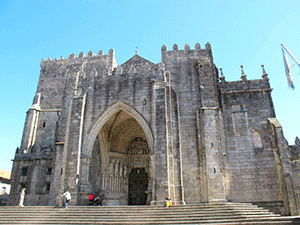 Tui Cathedral – Portuguese Way
Tui Cathedral – Portuguese Way
Perched on top of the hill at the highest point of the town, Tui’s cathedral has a fantastic vantage point with views over the surrounding land and the Minho River, the natural border between Galicia and Portugal. Tui cathedral is dedicated to the Virgin Mary (Cathedral de Santa María) and it was also used as a fortress and defence building for the town. It is a Romanesque building with later Gothic touches. Tui is located on the last section of the Camino Portugues.
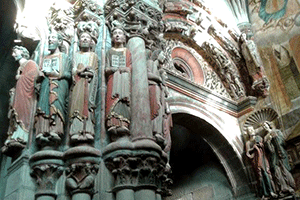
According to legend, Ourense Cathedral was originally built as a temple in the 6th century by Karriarico, King of the Suevi, who wanted to thank Saint Martin of Tours (San Martiño) for curing his son’s illness. The building got destroyed during various attacks to the city but the cathedral was rebuilt in the 12th century, in a classic Romanesque style. Ourense Cathedral also has a Paradise Portal, inspired by the Pórtico da Gloria of Santiago’s Cathedral. Ourense city is located on the last section of the Via de la Plata.
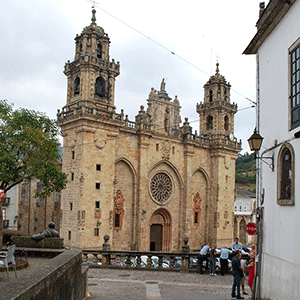
Also a classic 12th century Romanesque building in origin, many layers and additions have been applied to Mondoñedo Cathedral over the years, the main work being done in the 18th century, hence the baroque look and feel of the cathedral visitors see today.
Mondoñedo might seem like a sleepy country town today but it was once one of the capitals of of the Kingdom of Galicia and an important religious centre.
In addition, Galicia has yet another ‘natural’ cathedral: the arches of Cathedrals Beach, nature’s own temple sculpted into the slate rock by the Cantabric sea.
The beach is located just outside Ribadeo (also on the Northern Way or Camino del Norte) and it is one of Galicia’s most visited places after the cathedral in Santiago de Compostela.
For more information about the Camino de Santiago or to book your Camino trip, contact our travel specialists.
